Overview
- Features: A walking tour of the Pink City, to see markets, attractions, and daily life in the Old City of Jaipur
- Opening Times: 10am to 8pm, daily
- Best Time to Visit: Late October to early March
- Duration: Half a day
- Travelled By: Auto rickshaw
- Cost: Free
- Address: Pink City, Jaipur, Rajasthan, India
- Type: Activity, Market
Author Reviews[display_rating_item_results rating_form_id=”2″ rating_entry_ids=”1″ show_category_filter=”false” show_options=”true” result_type=”star_rating” preserve_max_rating=”true” show_title=”false” show_count=”false” ]
Total Rating: [display_rating_result rating_form_id=”2″ show_count=”false” show_rich_snippets=true] [accordions load=”1″] [accordion title=”User Reviews” last] [display_rating_item_results rating_form_id=”5″ show_options=”true” result_type=”star_rating” preserve_max_rating=”true” show_title=”false” show_count=”true” show_rich_snippets=true] [/accordion] [accordion title=”Add Review”][display_rating_form show_email_input=”true” show_comment_textarea=”true” show_name_input=”true” rating_form_id=”5″] [/accordion] [/accordions]
Summary
A walking tour of the Pink City is a great introduction to the daily life of the people of Jaipur. The markets are teeming with people, and where shops sell everything under the sun. It is an assault on the senses – the smell of spices and perfumes, the sound of car horns beeping, the colourful flowers and saris, the taste of delicious street food, and the sweat on our brow.
Jaipur Walking Tour
We decided to conduct our Jaipur walking tour on the day of Diwali. We were fortunate to witness this city at its peak – crowds of people celebrating Diwali with their family and friends, other still out shopping for items to celebrate Diwali at home. Whatever the occasion, the city was teeming with shops and people, and we were right in the centre of the action.
We started our Jaipur walking tour after returning from Nahargarh Fort. Walking down Nahargarh Road, we entered into a beavy of back streets, each one looking like the last. We were aiming to get to Chandpol Bazar Road. Of course, we got lost amongst those crazy streets but who cared. Occassionally, we asked for directions to Hawa Mahal or City Palace, and we hoped that we were walking in the right direction.
Something has to be said about getting lost. It has its attraction, because the sights that we came upon, while walking around the back alleyways of old Jaipur, was exhilarating, to say the least. At first, we, as well as the traffic, were stopped by a couple of donkeys standing in the middle of the road. According to the Hindu religion, animals are to be worshipped and treated well, so people would drive around donkeys, and cows, for that matter, instead of getting them to move. Quite incredible really!
[singlepic id=3094 w=720 h=560 float=center]
A common sight while walking around the old city was Indian sweet shops. To celebrate Diwali, people give Indian sweets as gifts to their family and friends. In order to feed the Indian population, the sweet makers had to produce a ton of sweets. As a result, they had to extend their shops on to the street, so that they would have enough room to store their sweets.
Unfortunately, the problem with this method is that the sweets attract a lot of flies and who knows what else. So, while we admired the selection of sweets, there was no way either of us were going to eat any.
What I did like though was the street food that was sold in the old city of Jaipur. The variety of street food was extreme, and I tried my best, but I couldn’t taste them all. I did pick out a few that were my favourites from when I lived in India, and also got to taste a few different ones I hadn’t tried before.
Being a native of India, I can eat anything and not have a bad stomach (yes, lucky me!). However, Graham wasn’t fortunate enough to eat street food, just yet at least, so he had to abstain, while I got to put my taste buds to the test.
Street food in India is delicious, no matter what you have. There is so much to choose from, and making a choice can be a hard one. They are on every street corner, making it extremely difficult to avoid.
[singlepic id=3074 w=720 h=560 float=center]
Still on the topic of food, there were many shops selling namkeen, which are salty, crispy, fried snacks. They had them piled high, and decorated in such a way that they looked extremely colourful. Not only is namkeen used for everyday snacks, they are also used in puja prasad (offerings to Hindu gods), and shared with family and friends.
[singlepic id=3080 w=720 h=560 float=center]
While heading towards Chandpol Bazar, along Nahargarh Road, we passed by a puja pandal. They were celebrating Kali Puja, a festival that is celebrated in my home town of Kolkata. A ‘puja pandal’ is a makeshift pagoda set up for the purpose of installing an idol, which is made of mud, so devotees can attend to worship and pray to the idol, in this case, the goddess, Kali.
It was a surprise seeing them celebrate Kali Puja here, as I thought it was only celebrated in Kolkata. As I found out, it’s celebrated all over India.
[singlepic id=3091 w=720 h=560 float=center]
At a few places in the old city, we came across a stack of sugarcane resting on a wall at the side of the street. Wondering what they were, I found out later that they are used for Lakshmi puja, as it is the favourite food of the goddess, Lakshmi. Lakshmi puja is celebrated as part of Diwali. People place the sugarcane sticks around the house for wealth, happiness and prosperity.
[singlepic id=3097 w=720 h=560 float=center]
Along the back streets of old Jaipur, one can spot many a vegetable vendor, who usually have a temporary cart on the roadside. Vegetable vendors serve a great purpose for the Indian house wife. Instead of going to the market, women who live nearby will usually buy their daily vegetables from the vendor, as it is fresh, and they can decide what to cook on the day.
[singlepic id=3098 w=720 h=560 float=center]
Having walked along the streets adjoining Nahargarh Road, we finally made it to Chandpol Bazar, which is the main road and market. It is also the road that leads to Iswari Minar Swarga Sal minaret (entry west of Tripolia Gate), City Palace and Jantar Mantar (entry through Tripolia Gate if you’re VIP, or Atish Pol, if you’re a commoner) and Hawa Mahal (located at the intersection of Chandpol Bazar and Hawa Mahal Road).
During our Jaipur walking tour, we climbed to the top of the minaret, as this is the best place to get fabulous views of the old city of Jaipur. From the top, we could see the entire old city below us and we noticed how pink the Pink City really looked. Looking out, we recognised a few important landmarks – Hawa Mahal, City Palace, Jantar Mantar and Nahargarh Fort.
[singlepic id=3073 w=720 h=560 float=center]
Back on the street, we crossed the bazaar at the minaret and headed west into a lane called Maniharon ka Rasta. This is the best place to buy colourful Indian bangles, or if you’re like us, just to have a look around.
The bangles are made of lac (resin) and are worn by Rajasthani women as accessories to make them look pretty. In Rajasthan, a woman’s instinctive love for bold display of colours and decoration is satisfied with the costumes and accessories she wears. While her clothes are extremely colourful, the accessories she wears lends even more colour to them.
[singlepic id=3095 w=720 h=560 float=center]
The main streets of old Jaipur city are mayhem. Crossing the road in Jaipur can be hazardous, not only during rush hour. Traffic from every direction tries to make its way through these narrow roads. If there is a small gap in the road, a car or a bicycle will push themselves in making it virtually impossible to move and holding up traffic even longer.
The pavements are another matter altogether. There is no space to walk on the pavements as they are overcrowded with a riot of people selling their wares, from metal pieces and spare parts, to flowers and perfumes.
So, while it was interesting walking around old Jaipur, it was also quite frustrating having to battle our way through the crowds of people and the traffic on the road. There were many times when I thought I was going to die while crossing the road. However, I survived thanks to Graham’s navigational skills, and we eventually became better than the locals at crossing the road.
[singlepic id=3078 w=720 h=560 float=center]
Along Chandpol Bazar, there were numerous vendors selling flowers. Flowers are a big part of the Indian culture and they are used for many purposes. They are mostly used for religious purposes, especially as part of offerings.
The flowers here were extremely colourful. Several varieties of flower were being sold on the streets, with the most common variety being marigold, which come in two colours – yellow and orange.
[singlepic id=3099 w=720 h=560 float=center]
Some of the most beautiful Indian clothes are worn by Rajasthani women. The colours of their saris are vibrant – red is the most popular colour – and it makes them look very pretty indeed.
Of course, during the festival of Diwali, everyone gets dressed up and the clothes that the women wear are absolutely beautiful. Silk saris with gold trimmings and Georgette salwar kameezes in aquamarine blue were some of the clothes we saw during the festival in old Jaipur city.
[singlepic id=3081 w=720 h=560 float=center]
Due to the Diwali festival, there were several additional vendors on the street selling items related to Diwali celebrations. Small clay idols of the goddess Lakshmi, clay pots for holding offerings, as well as religious posters were some of the last minute purchases being made on the main streets of old Jaipur.
[singlepic id=3087 w=720 h=560 float=center]
We turned the corner and headed along Johari Bazaar Road to witness a different part of the old city. Johari Bazar is the jewellery market, and this is where you come to buy jewellery or see the jewellers, goldsmiths and artisans at work.
My favourite market is Bapu Bazar, along Johari Bazaar Road, as this is where the clothing and footwear markets are located. A favourite with Jaipur’s women, there are numerous shops selling fabrics of all kind, including Indian garments for women – saris, salwar kameezes and lehenga cholis.
The fabrics are stunningly beautiful – an array of dazzling colours, with intricate gold embroidery, which shows the workmanship and skill of these craftsmen.
[singlepic id=3083 w=720 h=560 float=center]
Last, but certainly not the least, are the famous Rajasthani jootis, a very traditional Rajasthani shoe, which is made from jute and embroidery. These shoes can also be found in Bapu Bazar. They come in various shapes, colours and sizes. Not only do they go well with Indian garments, they can also be worn with jeans or any Western pants for that matter.
We did return to Bapu Bazar on our last day in Jaipur to do some clothes shopping for myself. While I was unable to convince Graham to buy any Indian clothes for himself, I did indulge in the cheap prices for clothes in India, to update my travelling wardrobe.
Our Jaipur walking tour ended at Sanganeri Gate, as this is the outer boundary for the old city. MI Road is one of the biggest roads in Jaipur, and while it has lots of shops, we do not consider MI Road to be part of the Old City of Jaipur, as it is outside the gates to the Pink City.


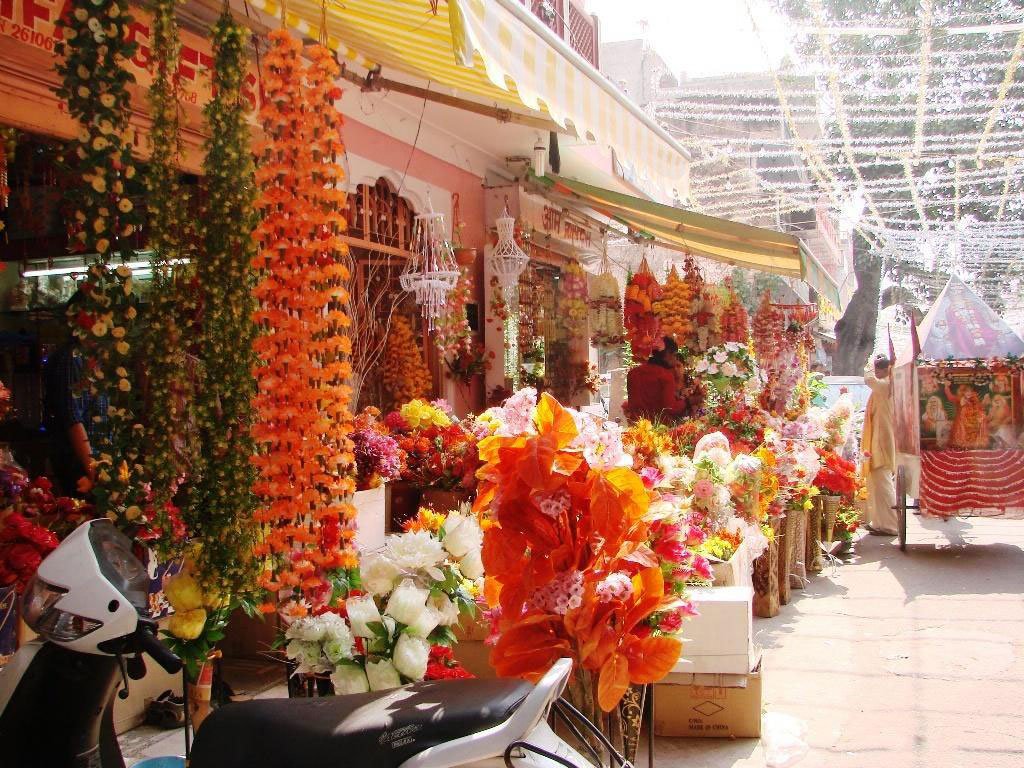
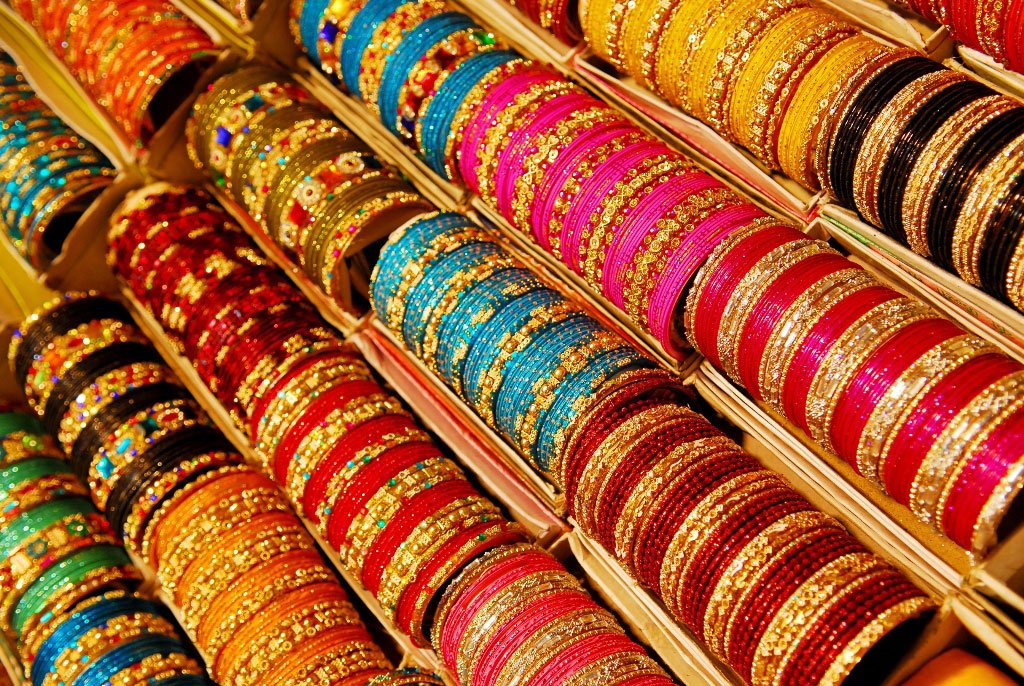
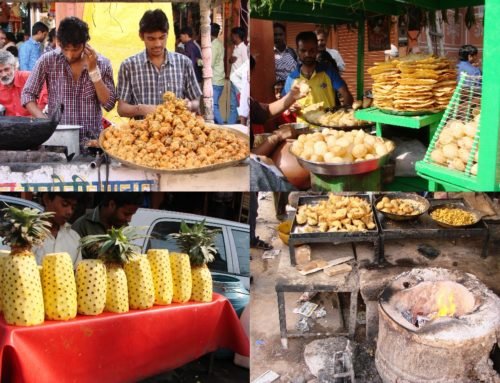
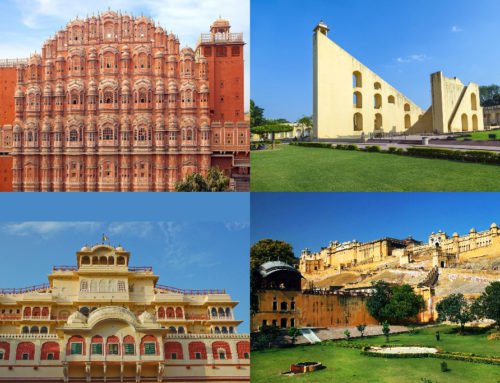
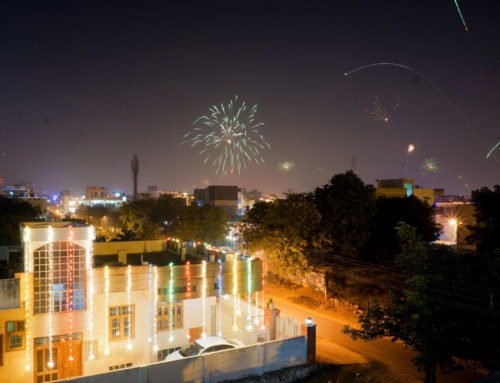
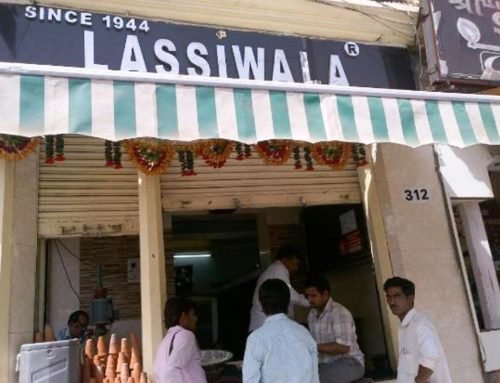
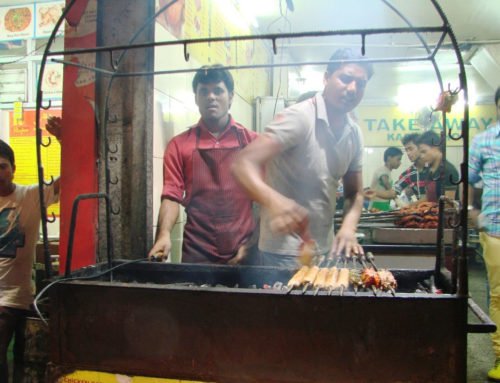
This is a good walking tour, although it did take us 2 days to finish it. We stopped at all the attractions along the way and did a lot of shopping.
Thanks BarryB. Glad you enjoyed it.
Interesting Walk